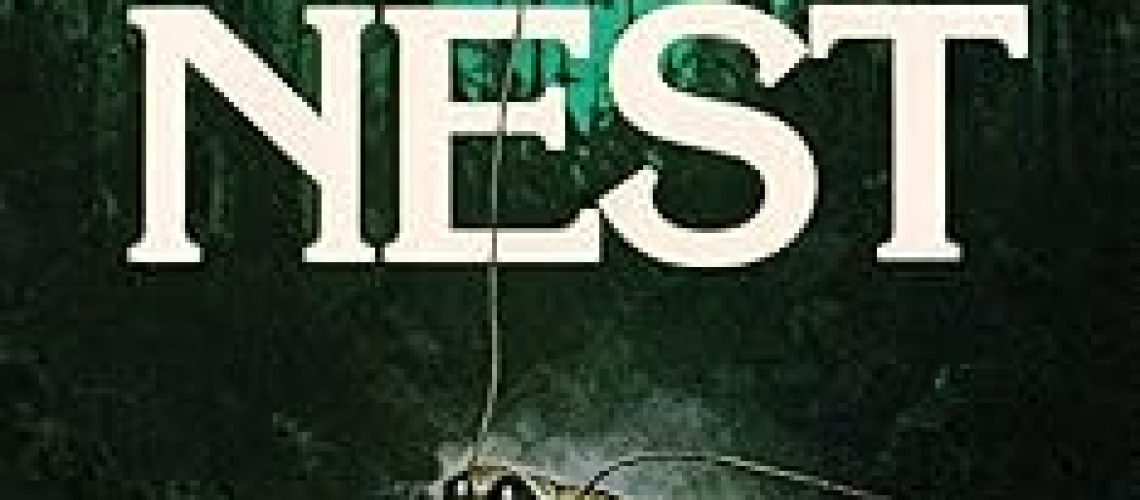For the uninitiated: In 2017 Quirk Books published a Stoker-winning nonfiction book by horror author Grady Hendrix titled Paperbacks from Hell: The Twisted History of ’70s and ’80s Horror Fiction. A love letter to the glory days of horror pulp, Paperbacks from Hell celebrated many long out-of-print, and often forgotten, genre releases. Commenting on the stories, the history behind them, and the wonderful cover art created to draw horror readers in, Hendrix did something for horror literature that others routinely do with horror movies (e.g. Joe Bob Briggs of Shudder’s The Last Drive In.)
Following up on this, the amazing folks at Valancourt Books launched a line of Paperbacks from Hell in collaboration with Hendrix and Will Erickson of the blog Too Much Horror Fiction. Through this series, Valancourt has been reissuing limited-edition, mass-market paperbacks of these “horror gems of the ’70s and ’80s” complete with the vintage cover art, whenever possible, and new introductions by Hendrix or Erickson. To date, twenty-one titles have been published in this series. I decided to start featuring each here on Skiffy and Fanty as I read them. Now that Shaun’s gone the full dive into horror, perhaps I can even get him to read some to then have discussions. But for now…
The first book in the line is The Nest by the pseudonymous Gregory A. Douglas, originally published by Zebra Books in 1980. Douglas’ real identity is Eli Cantor, a man with broad creative interests and talents, including conventional “literary” fiction published under his own name. Cantor studied philosophy, worked in a law office, ran a successful printing business, consulted, sculpted, painted, volunteered as a fire fighter, composed music, edited, and wrote nonfiction, prose, and poetry. Even when putting his pen to the genre pulp that some would dismiss as frivolous and vulgar, Cantor wrote with a stunning flair that both carried a strong artistic voice and gave readership the gore, frights, and titillation they sought in the pages of a horror novel.
In horror taxonomy, The Nest would be classified within the Creature Feature subgenre. The novel especially connected with me because I read it soon after watching Bert I. Gordon’s late 1970s loose adaptations of H.G. Wells’ The Food of the Gods and Empire of the Ants. The Nest fits within the same mold of horror, camp, and ick – just with more gore and sex, and greater talent at crafting sentences than Gordon went for. Ten years after Gordon’s classics, Douglas’ The Nest itself would be adapted into a creature feature film with the same name, directed by Terence H. Winkless off a screenplay by Robert King and produced by Julie Corman (wife of Roger). I haven’t watched the adaptation yet, but it’s available on Tubi, and is going on my to-watch list.
As the cover gives away, The Nest doesn’t feature giant rats or ants. Nor does it feature giant killer shrews or mantises. Here, we have giant cockroaches. And, with memories of The X-Files episode “War of the Coprophages” and living in Texas, I can’t imagine a more horrifying abnormally large and nauseating creature to face. Within a Cape Cod garbage dump, a nest of breeding cockroaches is spreading beyond control. So humans decide to use a new poison to decimate the roaches. Thus continues the Red Queen race of evolutionary adaptation, aided by a chemical mutagen in the poison’s formulation. A mutation in the cockroach population brought on by the poison spreads as genes are passed on to surviving roach offspring, increasing their size, and increasing their hunger. As the roaches leave the dump into the surrounding Cape Cod in search of food, these humans should serve their appetite just fine.
What makes The Nest so entertaining and interesting to read is Douglas’ ability to write something with captivating prose that also manages to horrify and shock. The human killing (and eating) by the roaches is described in gruesome detail, but flowery, poetic detail that serves an interesting contrast with dry and frank biological details alongside. Douglas achieves a sort of cold detachment that echoes the cockroaches point of view, while also showing the emotional and sensory horror from the human perspective.
So many horror authors (or their works) get immediately compared to Stephen King and his writing, for marketing purposes and name recognition. (Because King is, of course, the only horror author out there.) Almost always, the comparison is absurd. Yet here, The Nest actually reminded me of elements of King, including the large cast of characters, the merciless killing of characters young or old, the damaged – often unlikable – personalities of characters, and the moments of human debauchery when faced with horror and death (e.g. a man in The Nest who makes love to the forest floor). It’s a moment both comically absurd and comically disgusting, yet played fully straight – a perfect and symbolic fit for the novel.
The Nest is a relatively long novel (though not a door-stopper), but the pace never really lets up to leave the reader bored. The plot proceeds in completely predictable way in its overall path and major points along the way, yet the twists and turns between these expectations still manage to shock and provide complications to keep things interesting.
Beneath all the successful horror, The Nest also holds up as general commentary on the state of humanity as a species that likes to set itself apart from nature, yet remains inextricably linked with, and at the mercy of, the natural world. Following that vein, the novel serves up ecological/environmental themes and relevance that would interest readers now as much as when the novel was first printed.
Check it out, and look here for commentary and reviews of the other Paperbacks from Hell!







